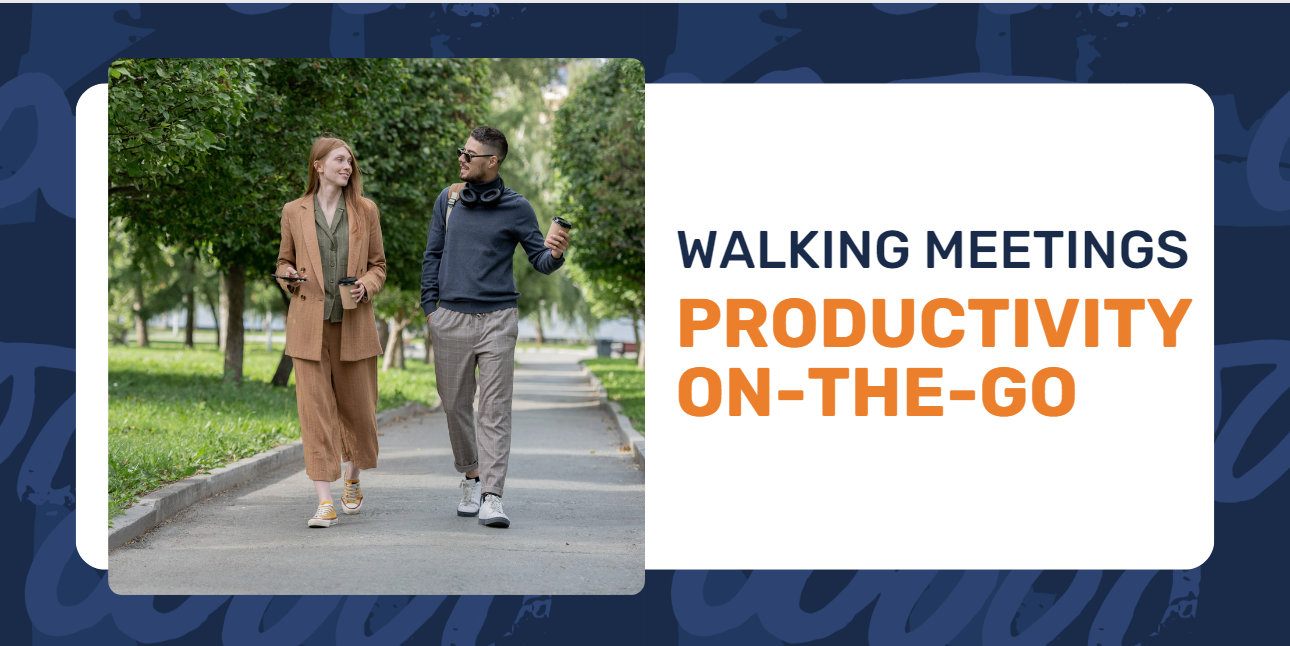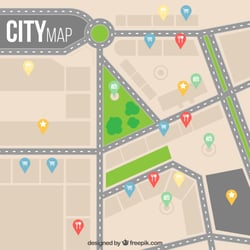4 min read
Walking Meetings: A Guide to Boosting Productivity on the Go
Written by: Anne Bach Krog Iversen, Chief DNA & Culture Officer - TimeXtender - October 23, 2023

Long before laptops and conference tables, the philosopher Friedrich Nietzsche wrote, “All truly great thoughts are conceived by walking”. And although our lives and where we work have changed dramatically, this fact still rights true!
Modern workplaces often involve sitting for hours, with meetings taking up a significant chunk of our time. But what if we changed the way we meet? It’s time for a fresh take on traditional sit-downs. Let’s dig into why walking meetings are a real game-changer and how you can introduce them into your routine.

Why Walking Meetings?
1. Boost Your Creativity
Ever had a brilliant idea while taking a stroll? Walking gets your blood flowing, which delivers more oxygen to your brain. This oxygen boost is powerful! It can spark creativity, encourage dynamic conversations, improve problem-solving, and more.
Stanford University conducted a very interesting study on this very topic called “Give Your Ideas Some Legs: The Positive Effect of Walking on Creative Thinking”. The study found that walking had a large effect on creativity. Most of the participants benefited from walking compared with sitting, and the average increase in creative output was around 60%. The study also found that the boost in creativity from walking continues for a time after the walk as well.

2. Strengthen Relationships
Moving away from the formal setting of a conference room can help strip away the usual workplace formalities. Walking side by side instead feels less confrontational. It levels the playing field and helps to foster a sense of camaraderie. Less extroverted team members may also feel more comfortable contributing ideas when others are focusing on their walk instead of all looking in their direction at once.
The act of walking can also keep participants more alert and engaged which leads to more productive discussions. As a result, teams grow together by solving tough problems or coming up with a creative new project they can bring to life.
3. Build Healthy Habits
Let’s not forget the physical perks. Walking is good exercise. It can help control weight, improve mood, and boost overall well-being. Consistently practicing healthier habits like walking meetings can have a ripple effect, encouraging not just physical activity but a range of other healthy habits.
For example, walking allows for mental breaks from screen time. Recognizing the mental clarity from these breaks can encourage people to take regular screen-free intervals during their workday. Walking can also alleviate the physical strains associated with prolonged sitting. As people notice the benefits, they might be more inclined to adopt better ergonomics at their workstations or take more frequent stand-up breaks.
Getting Started: Implementing Walking Meetings
Step 1: Start Small and Choose the Right Meetings
Not every meeting is fit for a walk and not everyone is physically able to participate, so choose wisely. Don’t bring the entire team, begin with one-on-one sessions or smaller team huddles.
Also, keep in mind what tools you need for the meeting. Is it important to be able to reference your project planning software? Then a walking meeting might not be appropriate. If you are brainstorming or exploring possible solutions to a problem, a walking meeting would add a perfect boost to your productivity.

Step 2: Plan Ahead
Choose a suitable route ahead of time. Parks or quiet streets work best. Ensure the path is accessible and safe for everyone. Check the weather and share it with everyone so they can dress appropriately. And make sure you have a back-up plan if the weather suddenly doesn’t cooperate. You don’t want to get stuck with nowhere to meet if Mother Nature decides to suddenly change her mood.
Always schedule a walking meeting in advance instead of suggesting it in the spur of the moment. You don’t want people to feel pressure to say yes if they would rather stay inside.
And of course, don’t forget to bring comfortable shoes. It’s really hard to concentrate and participate when all you can think about is that blister forming on your heel halfway through your walk!
Step 3: Keep it Structured
Walking doesn't mean wandering aimlessly. Set a clear agenda. Maybe even set specific discussion points as you pass landmarks or turns in your route to keep the conversation moving and on track. People don’t hate meetings, they hate meetings that suck or waste their time. Remember this when you plan your walking meetings as well. Your meeting should have a purpose and attendees should leave with action items or with their questions answered.
Skip the extra stops. Don’t take a walk together only to stop at the coffee shop to buy a high-calorie iced coffee that you normally would not have purchased. Treat this time with the same respect you would if you were in a meeting room or on a virtual call.

Bonus: Introduce Your New Habit At Home
Take this idea home with you! Take a 15 to 20 minute walk with your family after dinner where you can each share a little about your day. Or take a walk around the neighborhood yourself and while you do, call a friend you haven’t heard from in a while and catch up. Igniting this connection will boost your mood and a little bit of exercise will help you avoid that after-dinner snooze!
Kickstart your day with the benefits of walking and talking by starting your morning this way. Find a friend or loved one to walk with right away in the morning, once or twice a week. This is the best time because adding health habits often requires positive momentum. If you make the choice to start your morning with a walk it is easier to use that momentum to make healthier choices all day long. Maybe after your walk, you will choose an omelet for breakfast instead of a heavy bagel. Feeling better and healthier is best practiced one step at a time and one small change at a time.
It Is Time To Get Started
Walking meetings are more than a trend. They’re a smart way to blend work with well-being. If you're looking for a simple shift that can lead to big benefits, lace up those shoes and take your next meeting on the road!

